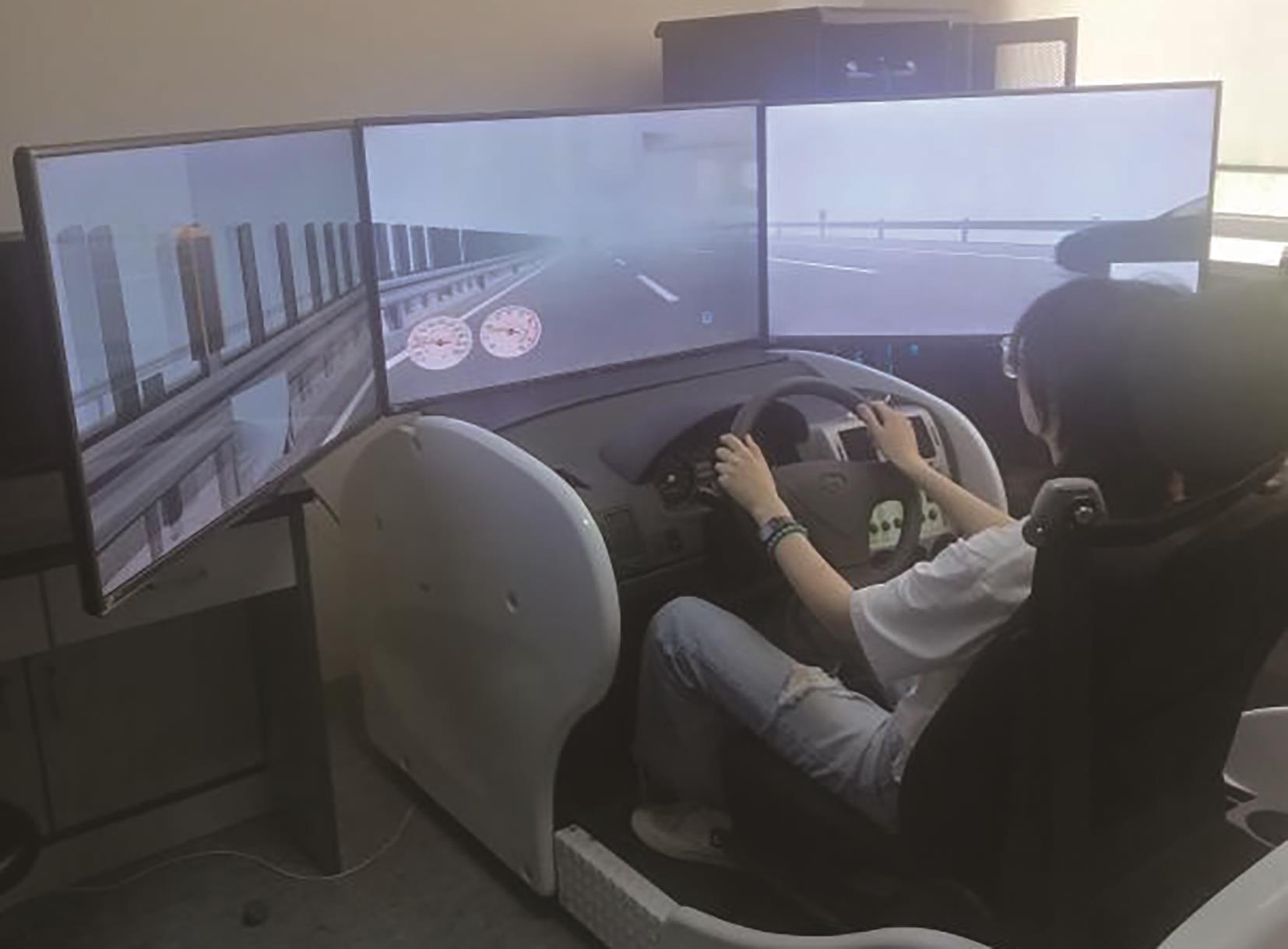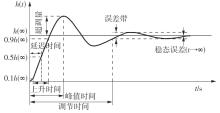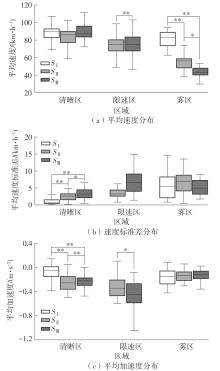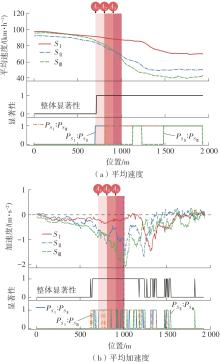| 1 |
交通运输部 .2020年交通运输行业发展统计公报[J].交通财会,2021(6):92-97.
|
|
Ministry of Transport of China .Statistical bulletin on the development of transportation industry in 2020[J].Finance & Accounting for Communications,2021(6):92-97.
|
| 2 |
黄冰娥,彭春露,陆键 .长江三角洲区域大型公路桥梁交通事故特征分析及安全对策[J].公路,2012(4):160-164.
|
|
HUANG Bing-e, PENG Chun-lu, LU Jian .Characteristic analysis and safety countermeasures of long span highway bridge traffic accidents of Yangtze River Delta[J].Highway,2012(4):160-164.
|
| 3 |
蔡晓禹,雷财林,彭博,等 .基于驾驶行为和信息熵的道路交通安全风险预估[J].中国公路学报,2020,33(6):190-201.
|
|
CAI Xiao-yu, LEI Cai-lin, PENG Bo,et al .Road traffic safety risk estimation based on driving behavior and information entropy[J].China Journal of Highway and Transport,2020,33(6):190-201.
|
| 4 |
王文治,石小法,张洪波,等 .杭州湾跨海大桥交通事故特征分析研究[J].公路,2016(5):152-156.
|
|
WANG Wen-zhi, SHI Xiao-fa, ZHANG Hong-bo,et al .Analysis and research on traffic accident characteristics of Hangzhou Bay Cross-sea Bridge[J].Highway,2016(5):152-156.
|
| 5 |
袁观虎 .大型桥梁交通运行状态影响评估模型研究[D].西安:长安大学,2015.
|
| 6 |
于群力,陈徐均,江召兵,等 .不发生侧滑为指标的跨海大桥安全行车风速分析[J].解放军理工大学学报(自然科学版),2008,9(4):373-377.
|
|
YU Qun-li, CHEN Xu-jun, JIANG Zhao-bing,et al .Analysis of safety wind velocity of driving on sea-cross bridge based on target of no sideslip[J].Journal of PLA University of Science and Technology (Natural Science Edition),2008,9(4):373-377.
|
| 7 |
CHEN Feng, PENG Haorong, MA Xiaoxiang,et al .Examining the safety of trucks under crosswind at bridge-tunnel section:a driving simulator study[J].Tunnelling and Underground Space Technology,2019,92:103034/1-9.
|
| 8 |
WANG Kun, ZHANG Weihua, FENG Zhongxiang,et al .Reasonable driving speed limits based on recognition time in a dynamic low-visibility environment related to fog:a driving simulator study[J].Accident Analysis and Prevention,2021,154:106060/1-8.
|
| 9 |
蒋德成 .区域高速公路网动态诱导与限速标志配置方法研究[D].西安:长安大学,2015.
|
| 10 |
MARTÍNEZ I, JIN W L .Optimal location problem for variable speed limit application areas[J].Transportation Research Part B:Methodological,2020,138:221-246.
|
| 11 |
张珊,张存保,李薇 .雾天环境下高速公路可变限速控制方法研究[J].交通信息与安全,2018,36(2):47-53.
|
|
ZHANG Shan, ZHANG Cunbao, LI Wei .A traffic control method for freeways using variable speed limits under fogy weather[J].Journal of Transport Information and Safety,2018,36(2):47-53.
|
| 12 |
孙长乐,高宏岩 .基于修正因子的雾天可变限速控制交通流模型[J].科学技术与工程,2020,20(10):4016-4021.
|
|
SUN Chang-le, GAO Hong-yan .Traffic model with variable speed limit control based on correction factor under foggy weather condition[J].Science Technology and Engineering,2020,20(10):4016-4021.
|
| 13 |
ZHAO X, XU W, MA J,et al .Effects of connected vehicle-based variable speed limit under different foggy conditions based on simulated driving[J].Accident Analysis & Prevention,2019,128:206-216.
|
| 14 |
KAPTEIN N A, THEEUWES J, van der HORST R .Driving simulator validity:some considerations[J].Transportation Research Record,1996,1550(1):30-36.
|
| 15 |
SHANGGUAN Q, FU T, LIU S .Investigating rear-end collision avoidance behavior under varied foggy weather conditions:a study using advanced driving simulator and survival analysis[J].Accident Analysis & Prevention,2020,139:105499/1-14.
|
| 16 |
赵晓华,陈雨菲,李海舰,等 .面向人因的车路协同系统综合测试及影响评估[J].中国公路学报,2019,32(6):248-261.
|
|
ZHAO Xiao-hua, CHEN Yu-fei, LI Hai-jian,et al .Comprehensive test and impact assessment for human factors of connected vehicle system[J].China Journal of Highway and Transport,2019,32(6):248-261.
|
| 17 |
ZHAO X, CHEN Y, LI H,et al .A study of the compliance level of connected vehicle warning information in a fog warning system based on a driving simulation[J].Transportation Research Part F:Traffic Psychology and Behaviour,2021,76:215-237.
|
| 18 |
龚鸣 .驾驶模拟器视认特性的有效性研究[D].北京:北京工业大学,2011.
|
| 19 |
WU Y P, ZHAO X H, CHEN C,et al .Modeling the influence of chevron alignment sign on young male driver performance:a driving simulator study[J].Accident Analysis and Prevention,2016,95:479-486.
|
| 20 |
赵晓华,房瑞雪,毛科俊,等 .基于生理信号的驾驶疲劳声音对策有效性实验[J].西南交通大学学报,2010,45(3):457-463.
|
|
ZHAO Xiaohua, FANG Ruixue, MAO Kejun,et al .Test on effectiveness of sound as countermeasure against driving fatigue based on physiological signals[J].Journal of Southwest Jiaotong University,2010,45(3):457-463.
|
| 21 |
WU Y, ABDEL-ATY M, PARK J,et al .Effects of real-time warning systems on driving under fog conditions using an empirically supported speed choice mode-ling framework[J].Transportation Research Part C:Emerging Technologies,2018,86:97-110.
|
| 22 |
BIAN Y, ZHANG X, WU Y,et al .Influence of prompt timing and messages of an audio navigation system on driver behavior on an urban expressway with five exits[J].Accident Analysis & Prevention,2021,157:106155/1-15.
|
| 23 |
张驰,任士鹏,王博,等 .长大下坡路段货车运行速度特性及预测[J].华南理工大学学报(自然科学版),2022,50(3):38-49.
|
|
ZHANG Chi, REN Shipeng, WANG Bo,et al .Speed characteristics and prediction of trucks on long and steep downgrade sections[J].Journal of South China University of Technology(Natural Science Edition),2022,50(3):38-49
|
| 24 |
胡寿松 .自动控制原理[M].4版.北京:科学出版社,2001.
|
| 25 |
陈晨 .城市道路驾驶员生态驾驶行为评估方法研究[D].北京:北京工业大学,2016.
|
| 26 |
赵晓华,鞠云杰,李佳,等 .基于驾驶行为和视觉特性的长大隧道突起路标作用效果评估[J].中国公路学报,2020,33(6):29-41.
|
|
ZHAO Xiao-hua, JU Yun-jie, LI Jia,et al .Evaluation of the effect of PRMs in extra-long tunnels based on driving behavior and visual characteristics[J].China Journal of Highway and Transport,2020,33(6):29-41.
|
| 27 |
XIAO Q, HE R, YU J .Evaluation of taxi carpooling feasibility in different urban areas through the K-means matter-element analysis method[J].Technology in Society,2018,53:135-143.
|




















